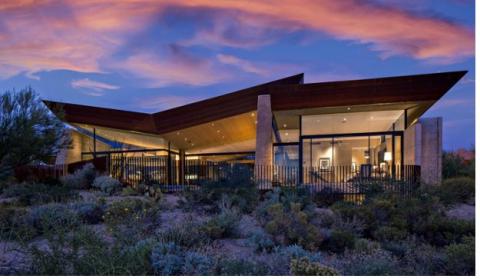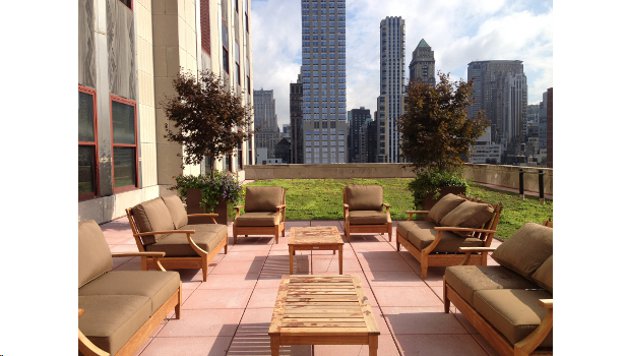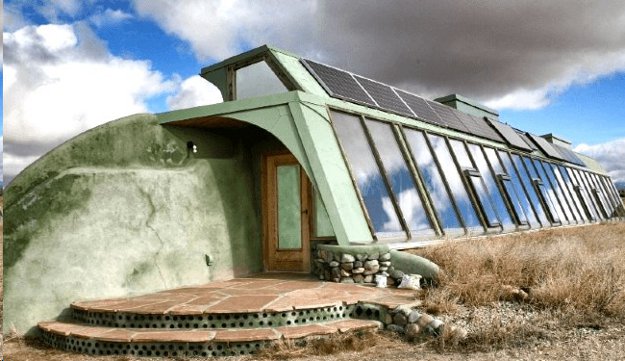The Rise of Organic, Eco-Friendly Housing Designs

With as many as 43 percent of American households unable to pay their bills if they had to go just one month without a paycheck, it may come as no surprise that more people are looking for alternative ways to survive in the current economic climate. Investigating alternative designs of home construction that are independent of power and water supplies has seen a growing interest in cities across America. The rise of the conscious consumer has never been so popular with trends of eco-friendly and organic designs or products dominating the market, and the housing industry is catching up fast with the generation of sustainable and unique homes.
Manufactured House Design
Architectural companies are leading the way to creatively build manufactured and mobile homes that are built to be waste-conscious and low in energy, such as the Desert House Prototype or the Holy Cross Project designed after Hurricane Katrina. This type of sustainable home can be as low as $35 per square foot, and the idea of customizing a basic design to personal tastes has become a great advantage to homeowners. With the combination of an increase in demand and the broadening of financial help for purchases by way of loans or reverse mortgages, particularly for those already having capital, this makes for great energy-efficient options for sustainable house design.

Green Roof Sustainability
When there is a need to save money on energy costs, the concept of a green roof such as designs seen across New York City over the last decade (even the Empire State Building has one) has seen a huge rise. Designing a living roof or wall can often be the most innovative and efficient insulators in keeping buildings cool in the summer and warm during winter. In some cases, they can even be structured to cover an existing roof, as long as the logistics of installing a green roof are taken into consideration.
Vehicle or Wagon Conversions
Converting an old bus, train wagon or even an airplane is growing in popularity with architecture firms and creative types. One of the Inhabitat magazine writers, Michelle Kennedy Logan, lives and works out of an old school bus with her family. The versatility and economic benefits are abundant, and 'skoolies' can often be bought for a few thousand dollars. These are one of a kind, and can be designed to an individual's creative specifications that also encompass green-living concepts, such as using wind turbines, solar panels and recyclable materials.

Earthships
The key elements of building an earthship are based on using old car tires and the rammed earth method, whereby the tires replace the more traditional materials of wood or brick, and are then stacked with a damp mixture of earth, sand and clay to form a constructional design which is entirely individual. They are extremely eco-friendly and incorporate ideas of saving water and energy. Earthships first originated in New Mexico, but Colorado probably has the most concentration of earthships in the US mainly due to its sunny climate for solar power.
Straw Bale Housing
Straw bale homes are relatively easy to incorporate beautiful, sculptured elements of elegant curves and window seats into the design. There are numerous advantages of a straw bale home: not only are they insulative and low in energy since they’re made from an agricultural waste product, but they’re also an affordable housing option. Combined with mud plaster and a timber structure, they have been around for centuries and in particular, during the late 1890s, settlers from New England built houses, schools and churches from straw bales.
Cob Housing
If you’re keen in building a sustainable home but don’t want to spend a small fortune to achieve a unique and green building, then a cob house could be the solution. A mixture of sand, clay and straw, it is similar to adobe, except for using a higher percentage of straw. A cob house isn’t considered a typical home given that the versatile clay can be sculpted to any specified design. People have been building cob homes for as long as they have been farming and provided it’s built on a solid foundation with a solid roof, its durability will last hundreds of years.
As our desire to create and live in alternative housing increases, so does our awareness of reducing our environmental impact, and opting for sustainable and energy-saving homes will go a long way to reduce our carbon footprint. Furthermore, a green and unique construction, made from natural resources such as cob, bamboo, wood, straw or recycled products, goes a long way to making homes more affordable, particularly when these efforts are gaining in popularity and becoming more mainstream.
Author Bio:
Jennifer Vickers is a contributing writer at Highbrow Magazine.
For Highbrow Magazine































































































































































































































































































































